Spinning Gold spins a tale of Casablanca Records and 1970s decor
I learned a lot about the legacy of Casablanca Records by watching Spinning Gold, the biopic of 1970s record producer Neil Bogart who co-founded the American record label. We can all also learn a lot about 70’s interior design and furniture from this movie, so join us as we go on a Film-and-Furniture-style investigation with production designer John El Manahi.
Having worked in the periphery of the music industry for over three decades, I was surprised Casablanca Records wasn’t on my radar, or that of my music aficionado friends for that matter. That’s probably why Boggart’s eldest son Timothy Scott Bogart, felt the story was long overdue being told: He wrote, directed, and co-produced Spinning Gold and his brother Evan Bogart co-produced and worked in the music department for the film.
Named after Neil Bogart’s favourite film Casablanca (he also changed his last name to that of its star Humphrey Bogart), the record label had heavyweights like KISS, Donna Summer, Parliament, Gladys Knight, The Isley Brothers, The Village People, and Bill Withers on their roster. These bands and artists all rose to their musical heights under the watchful ear of one of the music industry’s most colourful music producer. In fact, Casablaca Records went on to be the most successful independent record company of all time.
Spinning Gold feels like a bizarre cross between a Glee-style musical and a traditional rock ‘n’ roll biopic, but which ever way you look at it, Bogart and Casablanca Records had a big part to play in changing the music industry (along with a rag tag team of young music lovers). Their mix of creativity verging on insanity and a total belief in each other and the music they were creating, shaped our culture and ultimately defined a generation.
The film sets ground the film firmly in the 1970s. We asked production designer John El Manahi about some decor details that caught our eye.
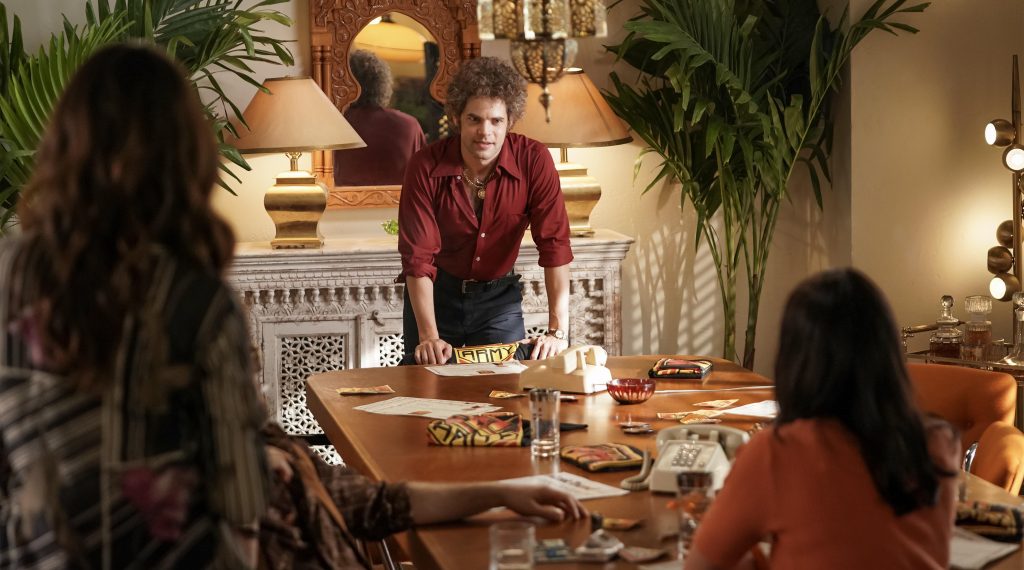
Film and Furniture: Casablanca Records’ offices are at the centre of the movie. What was your process for designing them and are there any key pieces of furniture or décor you feel ground the film in the time period.
John El Manahi: We referrenced photos of the actual offices and then tweaked the design to suit our shooting needs. We knew where the entrance was and how Neil would navigate through to his office.
We created a “bullpen” where the agents were making calls. We thought of a mini Mad Men type office that had some common space and private offices. All the desks, chairs, and lighting were circa the late 1960s early 1970s. Luckily the design of that type of furniture remained consistent, so it allowed for some flexibility.


F&F: Neil Bogart’s office is an interesting place. It’s separated in half, with one being your typical office desk situation and the other with a conference table. There is also a lot happening in the space; it seems to reflect Neil’s personality and look like he occupied it for quite some time. How did you pick up furniture that ended up in the office? Is there a specific piece that you had a hard time getting or you really wanted to include?
JEM: Thank you for noticing that! Neil’s office was recreated from pictures as closely as possible. Tim Bogart said it looked almost exactly how he remembered it from his childhood.
We situated the bar at the midpoint of the space, and the long white sofa (I think it was a Milo Baughman or Vladimir Kagan), created a natural dividing point. We used Moroccan screens to make more separation while keeping the flow.
The conference room was kept traditional with a few Moroccan accents, but it allowed us to create a sense of family and collaboration central to Neil’s personality.
He was primarily a social person who was always feeding off others’ energy. So we felt it necessary to have the conference room as part of his office rather than a separate space. We weren’t overly concerned with brands and design as much as we were with finding pieces that helped the choreography of our shots and told the story we needed. So as long as it was from the right period, the right colour, and didn’t distract, we would go for it.
We were lucky that we had lots of vintage lighting and art to give us options. So we were able to pick pieces that we felt reflected his personality and the story elements.
F&F: Why the Middle Eastern accents in Neil’s office, like the shape of the mirror behind the conference table or the pendant light above it. Why did you include those touches? How did you balance the more modern furniture with those decorative elements?
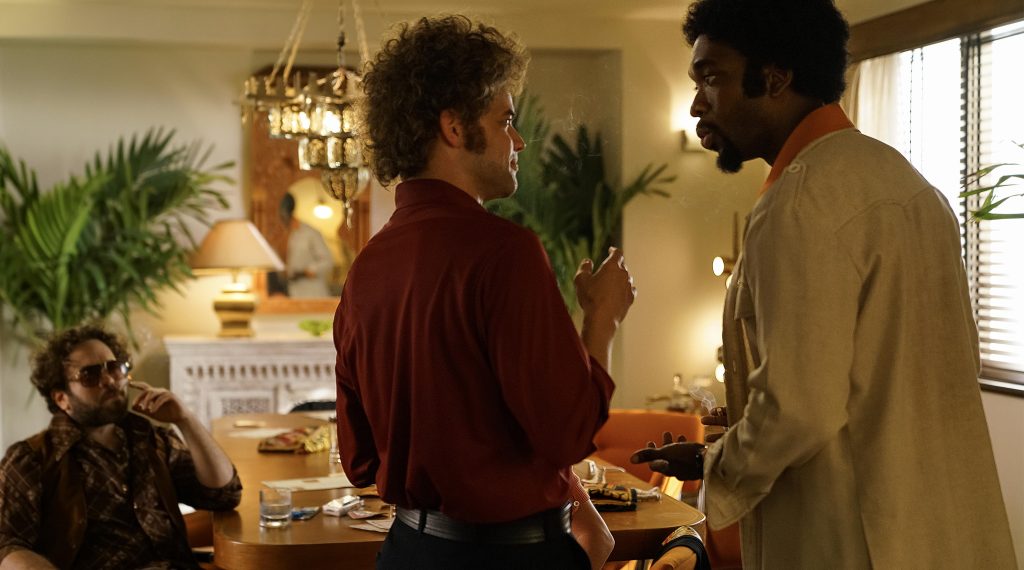
JEM: Neil’s fascination with the movie Casablanca drove a huge part of his personality and, ultimately, the formation of Casablanca Records. The importance of that detail couldn’t be underestimated.
Neil had Humphrey Bogart’s actual white tuxedo jacket from the movie as one of his prized possessions. He had a portrait of him right at the entrance of the Casablanca offices.
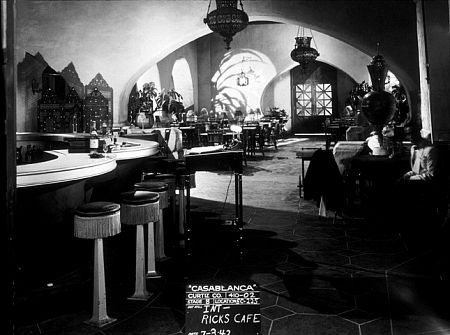
The real Casablanca offices had a Moroccan style that we recreated. We got a decorative inlaid screen mirror to go behind Neil’s desk that was very close to the original.
The arched openings of the main entrance and the bar keep in line with the French Moroccan/North African feeling.
You mentioned the Moroccan chandelier above the conference table: these were key elements that I’m so happy you noticed. These details were essential to creating the exotic allure that Casablanca was trying to achieve.
One easter egg that few people picked up on was the table lamps in the Century Plaza Ballroom. Those were the same table lamps as in Rick’s Cafe from the movie Casablanca. When you see details like that, it adds a fantasy element of it all playing out from Neil’s memory. We tried to balance history with the way memory plays with details.
Get the Moroccan Casablanca look

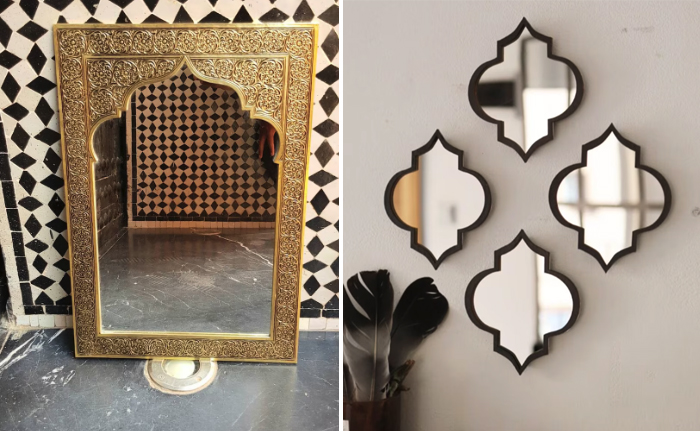
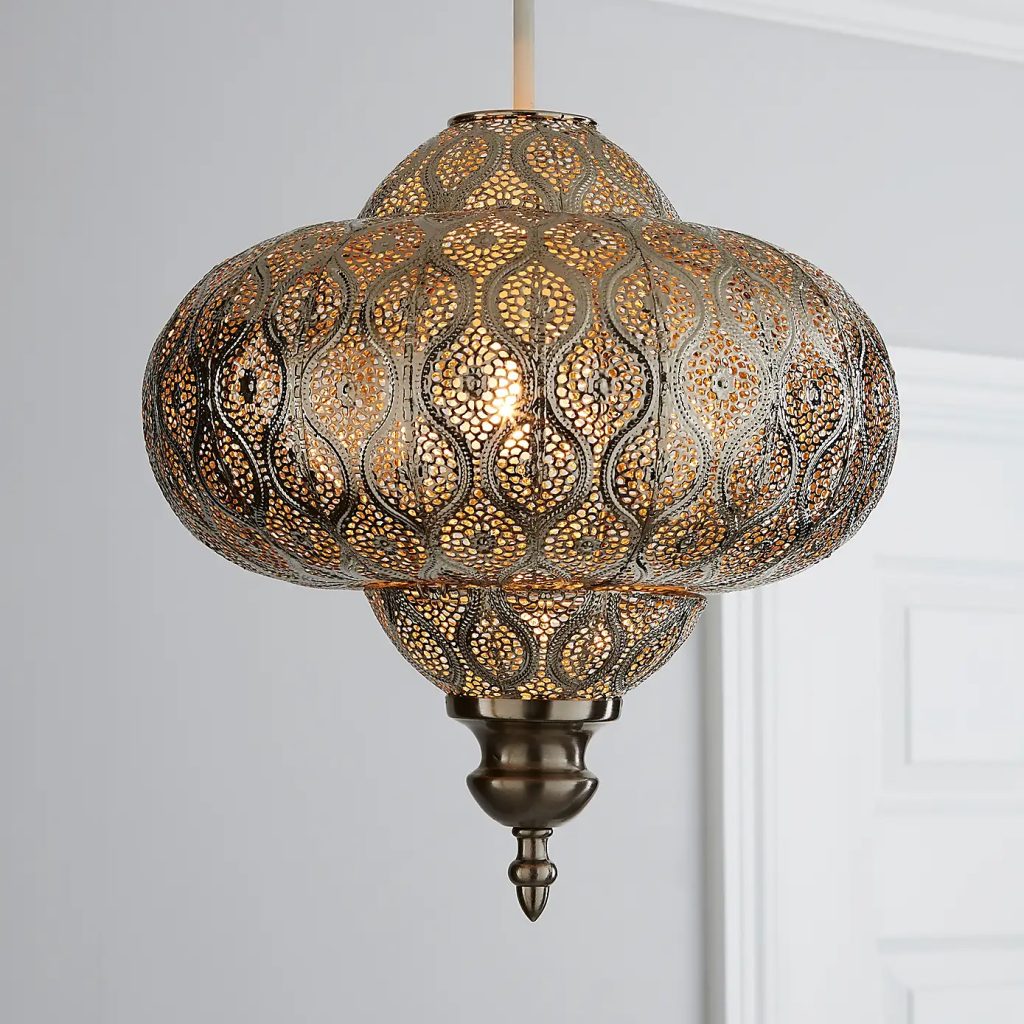
F&F: Neil’s desk is also filled with various decorative items, from photo frames to a candle. What was the process of figuring out what types of decorative items would fit in the space?
JEM: We recreated the look from many photographs taken at that specific time. We were so fortunate to have had a lot of Neil’s actual personal effects, desk objects, and family photos! So we recreated his actual desk as closely as we could.
I wanted his desk to reflect his mood as the story progressed, so we kept it very close to the actual objects, with very few things put there for no reason other than decoration. The only things other than real personal objects I wanted to put on his desk were interesting bits like unsigned contracts, bills, bad press, and the actual Coke spoon and vial given to him by George Clinton!
F&F: Did you make any changes to the office as time progressed?
JEM: Yes! We added more gold records to the walls as time progressed. We included a picture of his racehorse after he tells his father (Jason Issacs) he bought it.
We also added desk clutter (unsigned contracts, bills, and newspaper articles) to show the stress of his mounting debt and inattention to his work activities. This was extremely planned out as the story moved forward, and I feel it gave the scenes authenticity.
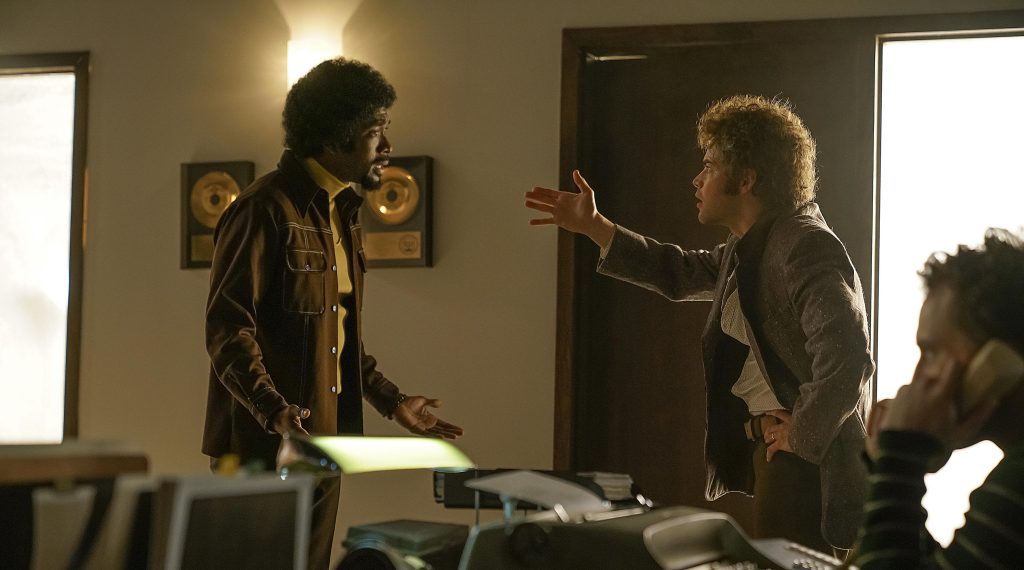
F&F: How did you source/make the gold records?
JEM: Most of those were actual originals from Neil Bogart’s personal effects. For those we didn’t have, we created by using our scenic, graphic design, and set decoration departments. We researched the gold records the artists had in the years that corresponded. We added gold records to the walls in the bullpen, and we used them as a way to show Casablanca becoming more successful as the artists gained their footing.
F&F: We see a lot of wonderful 1970s lamps in the movie. Can you tell us more about them, and why they were important to the relevant scenes?

JEM: In Neil’s office, we had an 81-inch Goffredo Reggiani arc lamp that Neil bumps into in frustration during an emotional scene with his father, played by Jason Issacs. It gave the moment a beautiful punctuation as a symbol of his material success colliding with his personal issues.
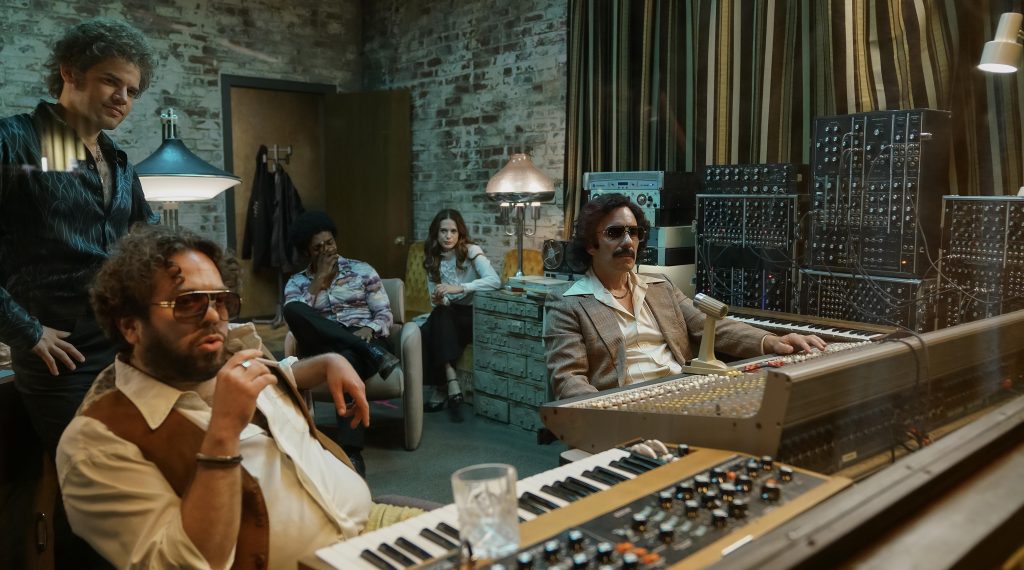
There’s a modern Italian table lamp from Porter and Plunk that we used in Giorgio Moroder’s studio in Munich.
There’s another lamp from the same set, a blue metallic and enamel floor lamp which is another example of 1960s 1970s “space age“ design.
We used those in Moroder’s studio to add a sense of futurism to compliment the synthesizers. His music was considered very modern and futuristic at the time. We wanted to give a sense of forward thinking and foreshadowing of changing times.
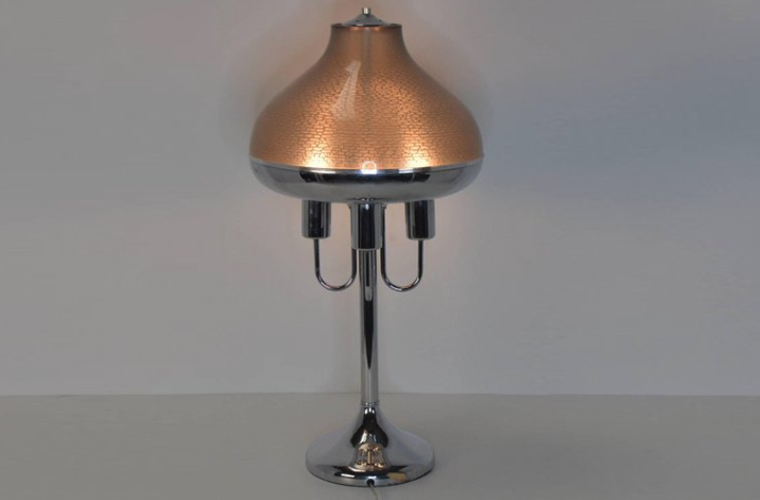
There is also a Bocci Table Lamp and a Vintage 1960s Desk Lamp. These were both seen from research, and we were lucky enough to find them to use in the offices. We wanted to keep within the period and keep a consistent design scheme.
It was a challenge, but in the end, I feel that my team, especially my set decorator Tricia Peck, delivered excellent results.
Full circle
In 1976, Casablanca Records merged with indie-film company Filmworks, Inc. headed by founder, Peter Guber to form Casablanca Record and FilmWorks, Inc., which had hits with the movies The Deep and Midnight Express.
Spinning Gold has been showing in cinemas as of 31 March.



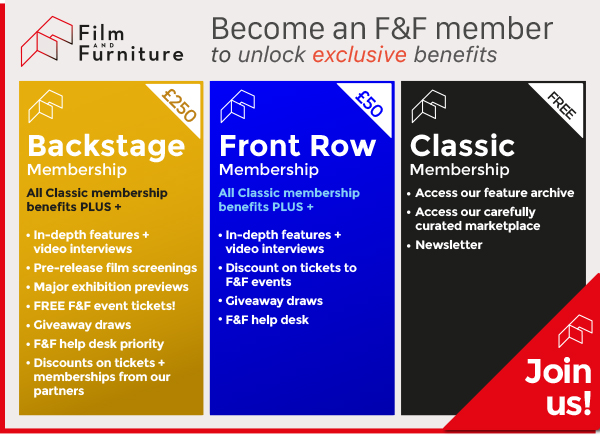
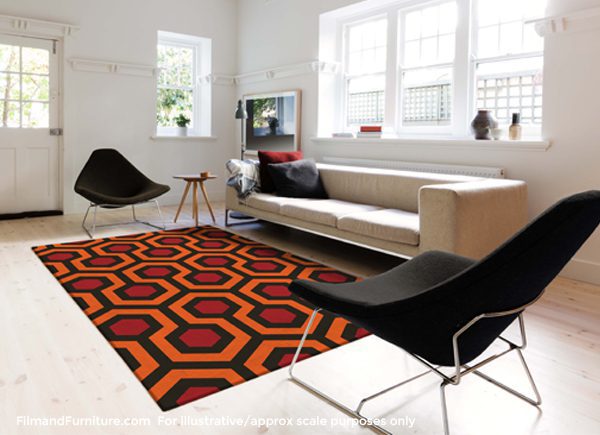

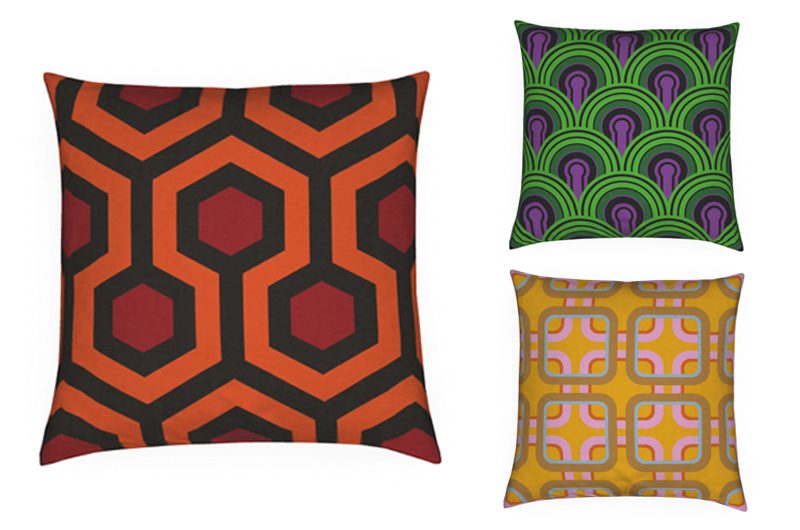
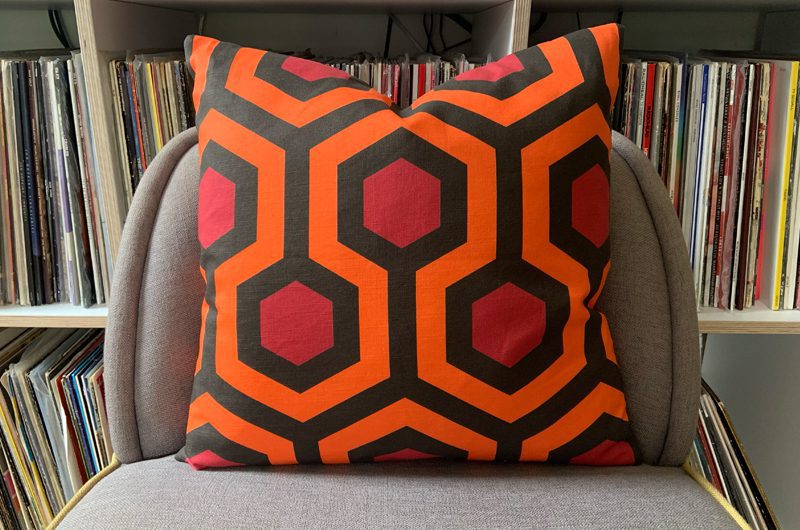


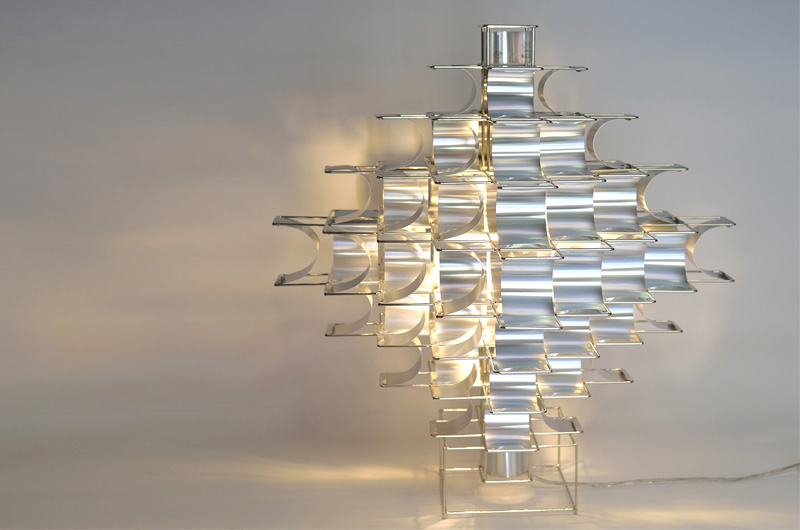
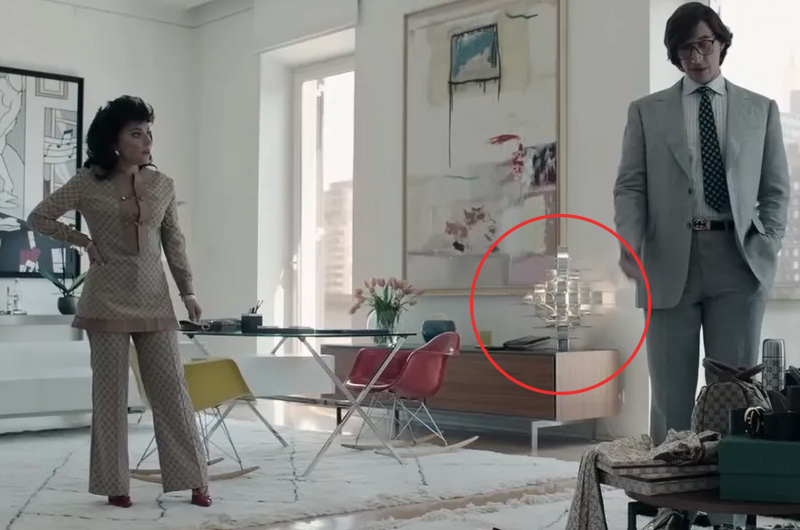
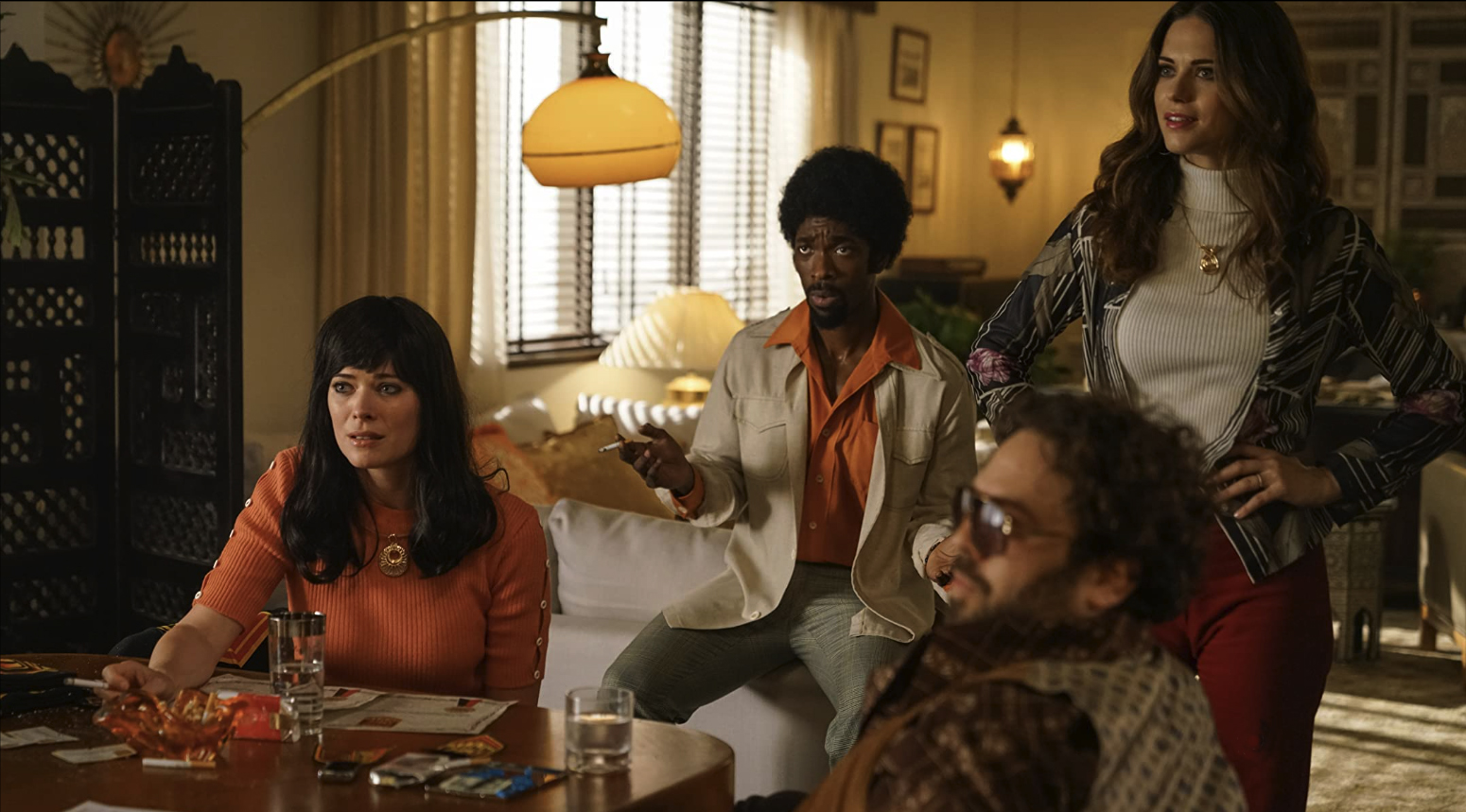

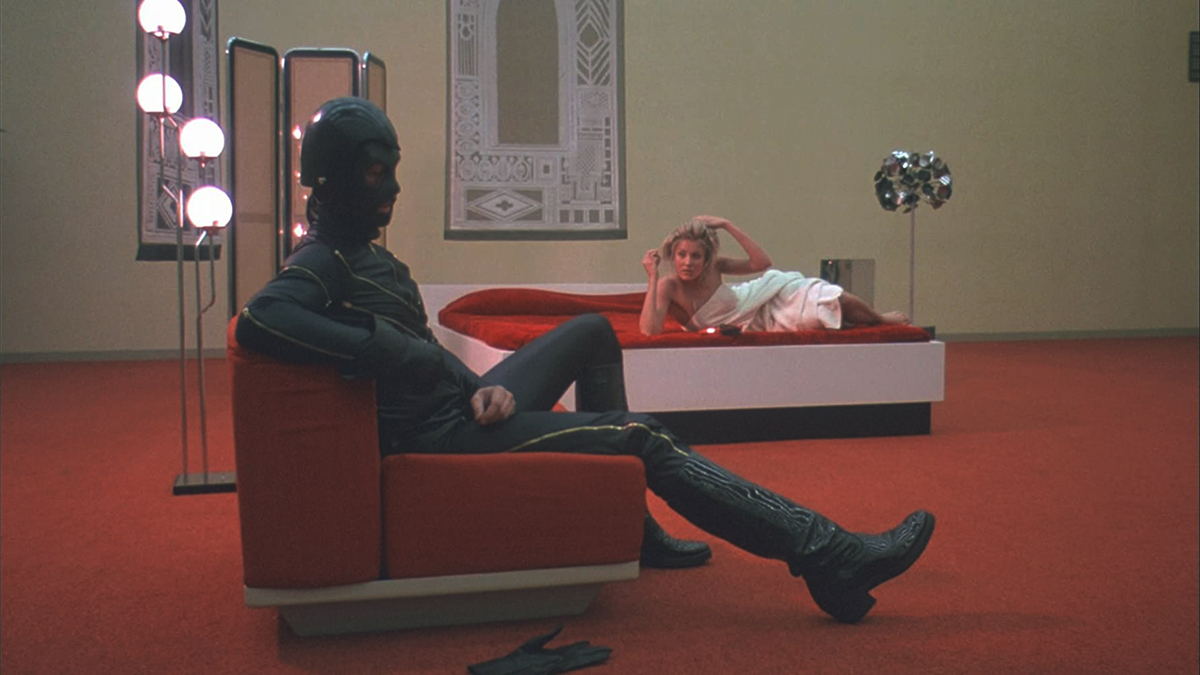

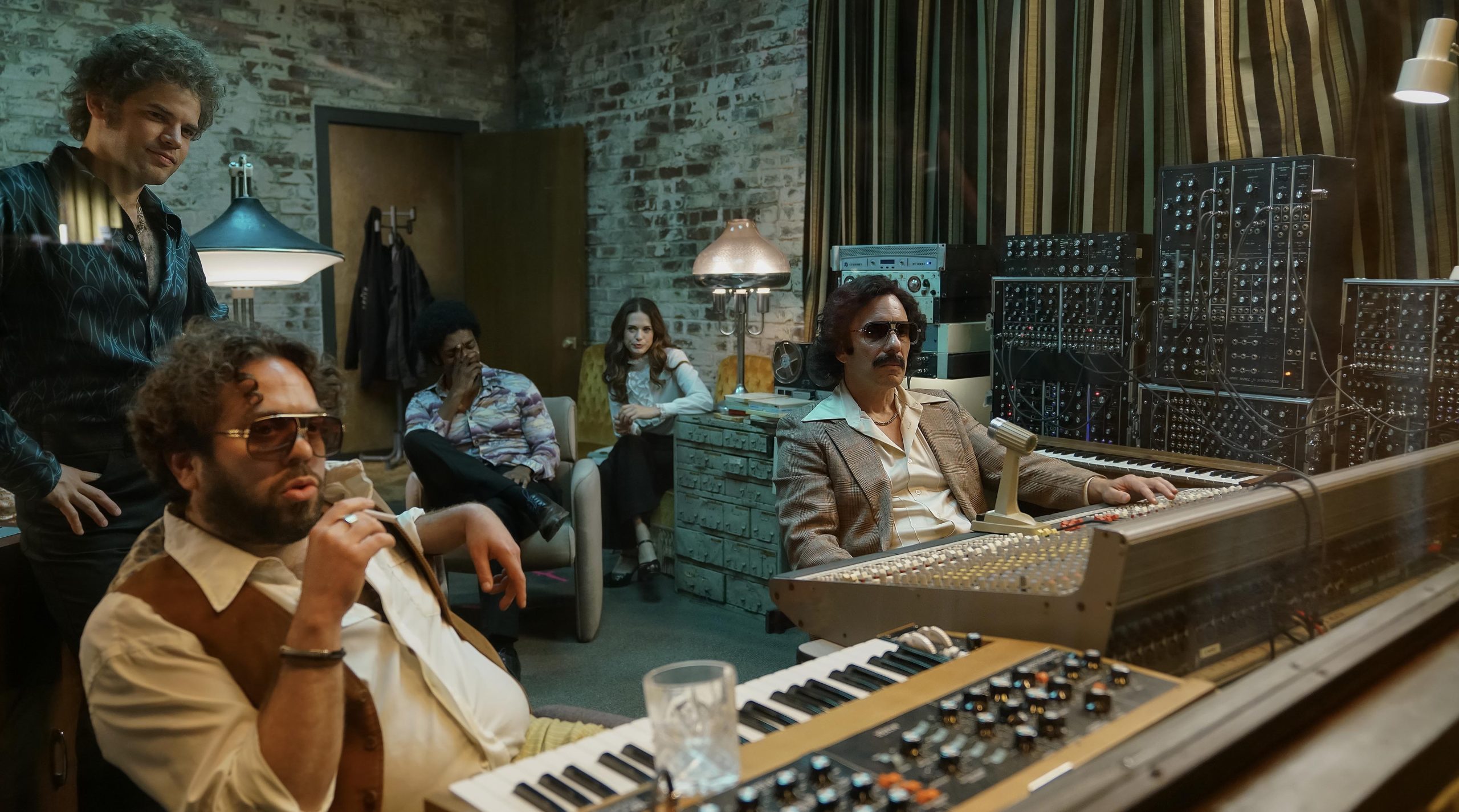

 Facebook
Facebook Twitter
Twitter Instagram
Instagram Pinterest
Pinterest RSS
RSS